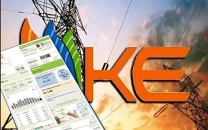Project financing: ADB to pull out of CASA-1,000MW import project
Cites security risks in Afghanistan as the reason to part from a project dear to the US .

CASA-1,000 is designed to transmit 1,300MW of surplus electricity from Tajikistan and Kyrgyz Republic through Afghanistan, which is going to consume 300MW, to Pakistan. DESIGN: SAMRA AAMIR
The Asian Development Bank (ADB) has decided to part ways with the 1,000 megawatt (MW) Central Asia South Asia (CASA) power import project due to security risks in Afghanistan in a big blow to the United States (US) which has been vigorously advocating for the project.
The CASA-1,000MW project is a strategic project for the US like the Turkemistan-Afghanistan-Pakistan-India (Tapi) gas pipeline project. The US had been trying to promote the CASA and Tapi projects which experts term unfeasible due to security concerns in Afghanistan.
A senior official of the Ministry of Water and Power said that the estimated total cost of the project was $966 million, of which ADB was to sponsor 40%.

“The project was to be funded by the World Bank, ADB and Inter-American Development Bank. Now, ADB has decided to pull out of the project due to security risks in Afghanistan,” the official said.
CASA-1,000 is designed to transmit 1,300MW of surplus electricity from Tajikistan and Kyrgyz Republic through Afghanistan, which is going to consume 300MW, to Pakistan. The memorandum of understanding among the four governments was signed on November 16, 2007 in Kabul.
In the final feasibility study of CASA-1,000 project conducted in February, 2011, the surplus power capacity to export by Tajikistan and Kyrgyz Republic has been reassessed. About 3,700 gigawatt hours (GWh) is expected to flow by 2016.
However, the catch is that under “No Generation Expansion Scenario”, the amount of exported power will be decreasing each year in view with the rise in local demand in Tajikistan and Kyrgyz Republic. Moreover, the energy flow will not be available throughout the year and will be recurring during the April to September period of every year only.
Cost of transmission had been projected at 3.37 cents per unit which will go up to 7.26 cents by 2030. Whereas, levelised cost of energy – the price at which electricity must be generated from a specific source to break even over the lifetime of the project – will be 5.38 cents per unit for 15 years and 4.94 cents for the 30-year period.
Projected sale price of energy by Tajikistan is 1.5 cents per unit and 2.5 cents per unit by Kyrgyz Republic.
An inter-governmental agreement (IGA) was signed in August, 2008 to govern and resolve issues critical to the implementation of the project. Each country had constituted a working group for deliberation on various issues with other working groups and make recommendations as a joint working group (JWG) for approval.
All parties were required to hire legal and commercial advisers to assist the countries in negotiations on bilateral and multilateral agreements.
The JWG has agreed for preparations on basis of a contractual joint venture and start negotiations on the standard terms and conditions of the proposed agreements in accordance with agreed commercial principles.
Published in The Express Tribune, June 6th, 2013.
Like Business on Facebook to stay informed and join in the conversation.
Correction: An earlier version of the article incorrectly stated that the energy flow 'will be available throughout the year' in the seventh paragraph. The error has been rectified.


















COMMENTS
Comments are moderated and generally will be posted if they are on-topic and not abusive.
For more information, please see our Comments FAQ